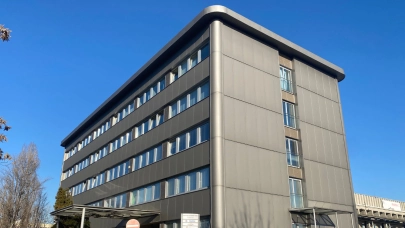
SEE Property Forum 2024, Romania’s leading international real estate event, brought together top economic minds to debate the effects of the economic convergence process in the region and also the current and future economic outlook of CEE.
Moderated by Csanád Csürös, CEO of Property Forum, the opening panel featured prominent speakers like Dorota Strauch CFA, CEE Coverage Lead and Chief Economist for Poland at Raiffeisen Bank International AG, Péter Ákos Bod, Former President of the Hungarian National Bank and Professor at Corvinus University of Budapest, Csaba Bálint, Member of the Board of the National Bank of Romania, Juraj Kotian, Head of CEE Macro / Fixed Income Research at Erste Group Bank AG, Ioan Nistor, Chief Economist at Banca Transilvania, and Valentin Tataru, Chief Economist for Macroeconomic Research at ING.
“Bringing together these remarkable speakers debating on economic topics in trend marks the official launching of our newest event & media platform Business Forum. Romania has great potential which is why we are dedicated to providing unparalleled insights into the Romanian market and turning Business Forum into a destination for professionals seeking comprehensive coverage of big-picture trends, economic developments, and the activities of listed companies. What we brought to the audience today, at the SEE Property Forum 2024 is just a preview of our objective to extend our reach to the Romanian market, outside real estate, and provide unparalleled coverage of its economic landscape through online news and dedicated events“ says Csanád Csürös, CEO of Property Forum.
The macroeconomics panel focused on several critical issues shaping the region's economic landscape, like the convergence success of CEE economies within the EU and globally, with Romania and Poland being noted for their stronger growth; whether CEE can be considered a coherent economic region, given its diversity; current trends in consumption and investment across CEE countries; future drivers of growth for the CEE region, with a focus on the next decade and the impact of demographic trends on long-term economic prospects.
In the opening minutes, Dorota Strauch CFA, CEE Coverage Lead and Chief Economist for Poland at Raiffeisen Bank International AG delivered an individual presentation highlighting 2024 economic outlooks for Central and Eastern Europe, focusing also on Romania's mixed economic outlook for the current year: “While Romania has seen a downside surprise in growth revisions, the country remains resilient with ongoing growth in consumption and investment. Real GDP growth for Romania is projected at 1.2% for 2024, recovering slightly to 2.2% by 2025. Romania’s labour market continues to support consumer demand, with real wage growth expected to provide a modest boost. However, inflation remains a concern, with the country's average inflation rate projected to be 5.6% in 2024, only slightly improving to 5.3% by 2025. This persistent inflation, driven by services and wage growth, poses challenges for monetary policy and household purchasing power. Despite these inflationary pressures, Romania is benefiting from the utilization of EU funds, which has supported investment activities even in a period of economic slowdown. Looking forward, 2025 is expected to see an acceleration in investment, driven by foreign direct investment (FDI) and the continued deployment of EU resources, positioning Romania for a stronger recovery.” she noted.
The subsequent panel discussion covered key topics, including whether CEE economic convergence can be considered a success story Péter Ákos Bod, Former President of the Hungarian National Bank and Professor at the Corvinus University of Budapest remarked, “What I can say that I think the GDP per capita is a soft measure for the success of the economy but if you look at lifestyle, the structure of economy it’s then that we see the success of this transformation. I believe that no country in the region has found the secret, and all had good and bad decades. Looking at the future the big test for most countries in the region will be to maximize their capacity to retain young and educated people because we are losing population and if we cannot keep them home, we will lose work productivity.”
Csaba Bálint, Member of the Board of the National Bank of Romania commented on convergence and demography across CEE, stating, “On the long term, a healthy economy must rely first on its competitive and productive labour force, second on capital and third on technological advancement. Looking at the economic convergence in Romania, since the integration into the EU, the factors that helped our economic development were a better labour market with more jobs and more productivity (today we are three times more productive than in 2000), better institutions, access to EU funds and open markets, to name a few”. Referring to the demographic concerns raised during the panel, the Member of the Board of the National Bank of Romania said “demography is a big problem and in the case of Romania work emigration remains a significant problem. Unfortunately, we do not have good models on how to deal with this issue, more developed countries in the SEE region all have similar problems”.
Looking with optimism at the convergence in the SEE region Juraj Kotian, Head of CEE Macro / Fixed Income Research at Erste Group Bank AG stated that “convergence was extremely important for the countries in the region and all benefited tremendously. At the same time, demographics are a potential obstacle to growth and it worries me that we see many students going to study abroad not necessarily because there are better schools out there, but because of the poor schools at home. We urgently need educated people in order to mitigate the risks of the ageing trend. Better prepared workers will be able to stay employed for longer and be more productive”.
When exploring the labour trends and GDP, Ioan Nistor, Chief Economist at Banca Transilvania weighed in, “It’s true, we have an ageing problem that puts pressure on the economy, but I am optimistic and I think our economy reached a point where we see more integration in the labour market population and signs of a slowdown in emigration.” During the Q&A session Nistor also said “our GDP forecast for 2024 is at 1,8% but we are expecting the fiscal decisions in 2025 in order to see the direction”.
Finally, Valentin Tătaru, Chief Economist for Macroeconomic Research at ING acknowledged the benefits of the convergence and discussed demographic shifts, warning of their economic impact, “Back in 2000 the GDP per capita in Romania was 25% of EU average and 80% last year, so we must underline how successful this convergence process has been for Romania. But we must avoid the incomplete convergence trap, and how can we do that? We should boost productivity, increase automation, digitalization, sustainable energy solutions just to name a few and avoid, for example, over regulations”. Pointing to the demographic threats, Valentin Tătaru also said that “people leave not only because of the small wages but also because they are disappointed with the systems of health, education and so on. Even if it means to be pessimistic, I say this, that the demographic trend is clear: we will shrink. But another red flag is also education – without an educated labour force and educated population, we cannot go too far as an economy and as a country.”



